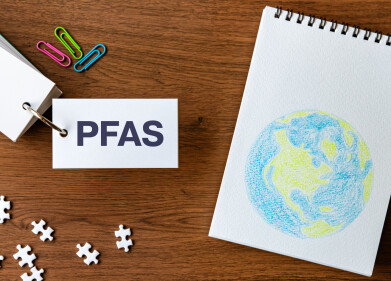HPLC, UHPLC
HPLC Detects Antibiotics in Honey
Feb 23 2020
Honey is one of the most natural foods known to man. It’s a sweet, viscous food made by bees from nectar. Of course, bees produce honey for their own use really - we are just honey thieves stealing from the hives. According to the United Nations and World Health Organization, any product labelled as honey must be a natural product.
But sometimes, to help the bees produce more honey or even just to protect bees in domesticated colonies, antibiotics are used in hives. There has also been instances when antibiotics are added to honey to help preserve it for longer. A paper published in the International Journal of Research in Pharmaceutical Sciences reports on a new method developed in Russia to allow the testing of honey for tetracycline antibiotics using liquid chromatography.
Not so pure honey
There are many different ways that honey is adulterated. Sugar, syrup and water are all used to change the flavour, colour or sweetness of honey But, whilst these might defraud the consumer, the addition of antibiotics to honey can have an altogether more sinister implication for consumers. Antibiotics can find their way into honey in several ways. Antibiotic residues from the treatment of bees is one way that antibiotics can be found in honey. Another method is when antibiotics are added directly to honey to prevent fermentation and to preserve the honey for sale. As the paper - Detection of tetracycline antibiotics in honey using high-performance liquid chromatography - states, this can ‘transform a useful product into a dangerous one’.
Antibiotics - friend and foe
The World Health Organization state that ‘antibiotics have revolutionized the treatment of infectious diseases in humans.’ However, the widespread and incorrect use of antibiotics has also created the problem of antibiotic resistance. Even simple or common diseases that we could treat a few years ago have become potential killers. Over 25 thousand people die in the Europe every year from infections caused by antibiotic resistant bacteria.
Long term use of honey containing antibiotics can weaken the immune system and lead to imbalances in the body’s microbiota. Hence the need to detect antibiotic residues in not only honey, but all foodstuffs that could be potentially affecting us. The researchers report that in Russia, there are currently no perfect analysis methods for detecting antibiotics in honey.
Chromatography analyses the honey
The researchers report that there are several methods currently available for honey analysis - but that there are drawbacks in the methods. They developed a reversed-phase high-performance liquid chromatography method specifically to determine tetracycline antibiotics in honey. The use of HPLC to detect drugs in food is discussed in the article, Determination of Chloramphenicol by QuEChERS and HPLC-MS/MS combination in matrices of animal origin. The method developed by the team allowed the detection of tetracycline antibiotics at the maximum residue limit of 0.01 mg/kg in honey. It would allow the detection of antibiotics in honey - helping to keep consumers safe.
Events
Apr 22 2025 Kintex, South Korea
Analytica Anacon India & IndiaLabExpo
Apr 23 2025 Mumbai, India
Apr 27 2025 Portland, OR, USA
May 11 2025 Vienna, Austria
May 18 2025 Tempe. AZ, USA












